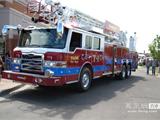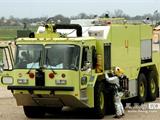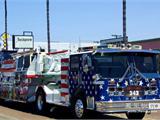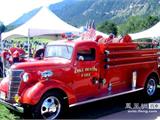Overview of the engine starting system for Dongfeng crane models, Skoda Rapid 1.4T cold start
In order to bring a stationary engine into operation, it is necessary to first use an external force to rotate the engine crankshaft, allowing the pistons to begin their up-and-down motion. This enables the cylinders to intake combustible mixtures, which are then compressed and ignited. The volume rapidly expands, generating strong energy that pushes the pistons and drives the crankshaft's rotation, allowing the engine to automatically enter its operational cycle. The entire process from when the engine's crankshaft begins to rotate under external force until the engine runs at idle speed on its own is called the engine starting process. The device used to accomplish this starting process is called the starting system.
### Section 1: Overview
During engine startup, it is necessary to overcome the resistance of the compressed gas within the cylinder and the frictional resistance between relatively moving parts of the engine and its accessories. The torque required to overcome these resistances is known as the starting torque. The minimum crankshaft speed necessary for the smooth starting of an engine is referred to as the starting speed. For vehicle gasoline engines operating at temperatures between 0-20°C, the minimum starting speed is generally around 30-40 r/min. To enable the engine to start quickly at even lower temperatures, the starting speed should not be less than 50-70 r/min. If the starting speed is too low, there will be excessive heat loss during the compression stroke, and the airflow velocity will be too low, leading to poor atomization of gasoline and making it difficult for the mixture in the cylinder to ignite.
For diesel engines, to prevent cylinder leakage and excessive heat dissipation, ensure sufficient pressure and temperature in the cylinder at the end of compression, and guarantee that the fuel injection pump can establish adequate injection pressure, a higher starting speed (150-300 r/min) is required. Otherwise, diesel atomization will be poor, the quality of the mixture suboptimal, and the engine difficult to start. Additionally, since the compression ratio of diesel engines is higher than that of gasoline engines, the starting torque is also greater, thus requiring more powerful starters for diesel engines compared to gasoline engines.
1. **Starting Methods**
- **Manual Starting**: This includes hand-cranking or rope-pulling methods. Its structure is very simple and is mainly used for starting auxiliary gasoline engines in high-power diesel engines or as a backup starting device in vehicles equipped with medium or small power gasoline engines. The manual starting device consists of a starter claw mounted at the front end of the engine and a handle.
- **Auxiliary Gasoline Engine Starting**: The starting device is large in size and complex in structure, only used for starting high-power diesel engines.
- **Electric Starter Motor Starting**: Uses an electric motor as the power source. When the drive gear on the electric motor shaft meshes with the ring gear on the edge of the engine flywheel, the electromagnetic torque generated by the rotating electric motor is transmitted through the flywheel to the engine crankshaft, starting the engine. The electric starter motor, often simply referred to as the starter, uses a battery as its power source, has a simple structure, is easy to operate, and provides quick and reliable starts. Currently, almost all automotive engines use electric starter motors for starting.
2. **Preheating During Start**
- **Intake Preheating Device**: To improve the starting performance of the engine, some carbureted engines are equipped with intake preheating devices. These devices are powered when the intake air temperature or coolant temperature falls below a certain value, heating the air in the intake manifold to facilitate engine starting and combustion of the mixture. Intake preheating devices typically consist of an electric-mixing air preheater, an intake preheating temperature control switch, and an intake preheating relay.
Medium and small power diesel engines commonly use cold-start preheaters. When starting the engine, after switching on the preheater, the heating element is powered and heats up, heating the valve body. As the valve body heats up and expands, it moves the valve core downward, separating its conical end from the fuel inlet hole. Fuel flows into the valve body cavity, vaporizes due to heat, sprays out, and is ignited by the hot heating element, producing flames that are sprayed into the intake manifold to preheat the intake air. When the preheating switch is turned off, the heating element loses power, the valve body cools down and contracts, the valve core moves upward, blocking the fuel inlet hole, extinguishing the flame and ending the preheating.
- **Glow Plugs**: Used in diesel engines with swirl chamber or pre-combustion chamber types of combustion chambers. Due to the larger surface area of the combustion chamber, heat loss during the compression stroke is greater than in direct injection types, making them harder to start. Therefore, glow plugs can be installed in the combustion chambers of swirl chamber or pre-combustion chamber diesel engines to preheat the air inside the combustion chamber during starting. Common types include open-type glow plugs and sealed-type glow plugs. Each cylinder has one glow plug, and each glow plug's central screw is connected in parallel to the power source. Before starting the engine, the glow plug circuit is first switched on, and the resistor wire heats up quickly, bringing the heating element steel sleeve to a red-hot state, increasing the temperature of the air inside the cylinder, thereby raising the temperature at the end of compression and making the injected diesel easier to ignite.
- **Starting Liquid Injection Device**: Primarily used for preheating during the start of some diesel engines. The nozzle is installed on the engine intake pipe, and the starting liquid spray can contains compressed gases such as nitrogen, along with flammable fuels like ether, acetone, and petroleum ether. When starting a diesel engine at low temperatures, invert the spray can so that the can opening aligns with the upper pipe opening of the nozzle. Gently press the starting liquid spray can to open the one-way valve at its end, allowing the starting liquid to pass through the one-way valve and nozzle, spraying into the engine intake pipe and entering the combustion chamber together with the air drawn into the intake manifold. Since the starting liquid is a flammable fuel, it can ignite quickly at lower temperatures, igniting the diesel injected into the combustion chamber.
- **Starting Decompression Device**: The decompression device improves the starting performance of diesel engines by reducing the starting torque and increasing the starting speed. The decompression devices of each cylinder in the engine are a set of interlocking mechanisms. In medium and small diesel engines, synchronous interlocking mechanisms are usually adopted, meaning all decompression valves open and close simultaneously. For high-power diesel engines, the interlocking mechanism of the decompression device is typically staged, meaning all decompression valves open before starting but close sequentially during starting, allowing some cylinders to enter normal operation first. After the engine is preheated, the remaining cylinders then enter normal operation. The decompression valve can be either the intake valve or the exhaust valve. Using the exhaust valve for decompression may cause carbon particles to be sucked into the cylinder, accelerating wear on components, so intake valve decompression is generally preferred.
Hello: You did not mention whether the engine fault light is illuminated. If the engine fault light is on, please visit the nearest service station for inspection. If the engine fault light is not illuminated, continue observing during use. If it occurs more than twice within a week, please visit the service station for inspection before continuing use. The issue you mentioned is likely related to the engine's water temperature sensor and throttle body. When the engine is cold, to make the engine reach normal operating temperature quickly, the engine computer monitors the water temperature. When the water temperature is below 90 degrees Celsius, the engine computer determines it to be cold and increases the throttle opening to increase the amount of air intake, adjusting the fuel injection timing to raise the engine speed and help the engine reach normal operating temperature more quickly. This is what we commonly refer to as the high idle speed during a cold start. If the water temperature signal is incorrect, this situation may occur. Also, the high idle speed during a cold start is related to the engine temperature and external environment. Please check if it is caused by the external environmental temperature.
We hope the above response is helpful, and wish your beloved car a speedy recovery!
Beijing Yechuan Sida Automobile Sales Service Co., Ltd.
The above content is jointly released by the Official Website of Sanitation Garbage Truck (http://www.clwlu.com/) | www_clwlu_com and Garbage Truck Manufacturer (http://www.clwwcw.com/) | www_clwwcw_com. For more exciting content:



